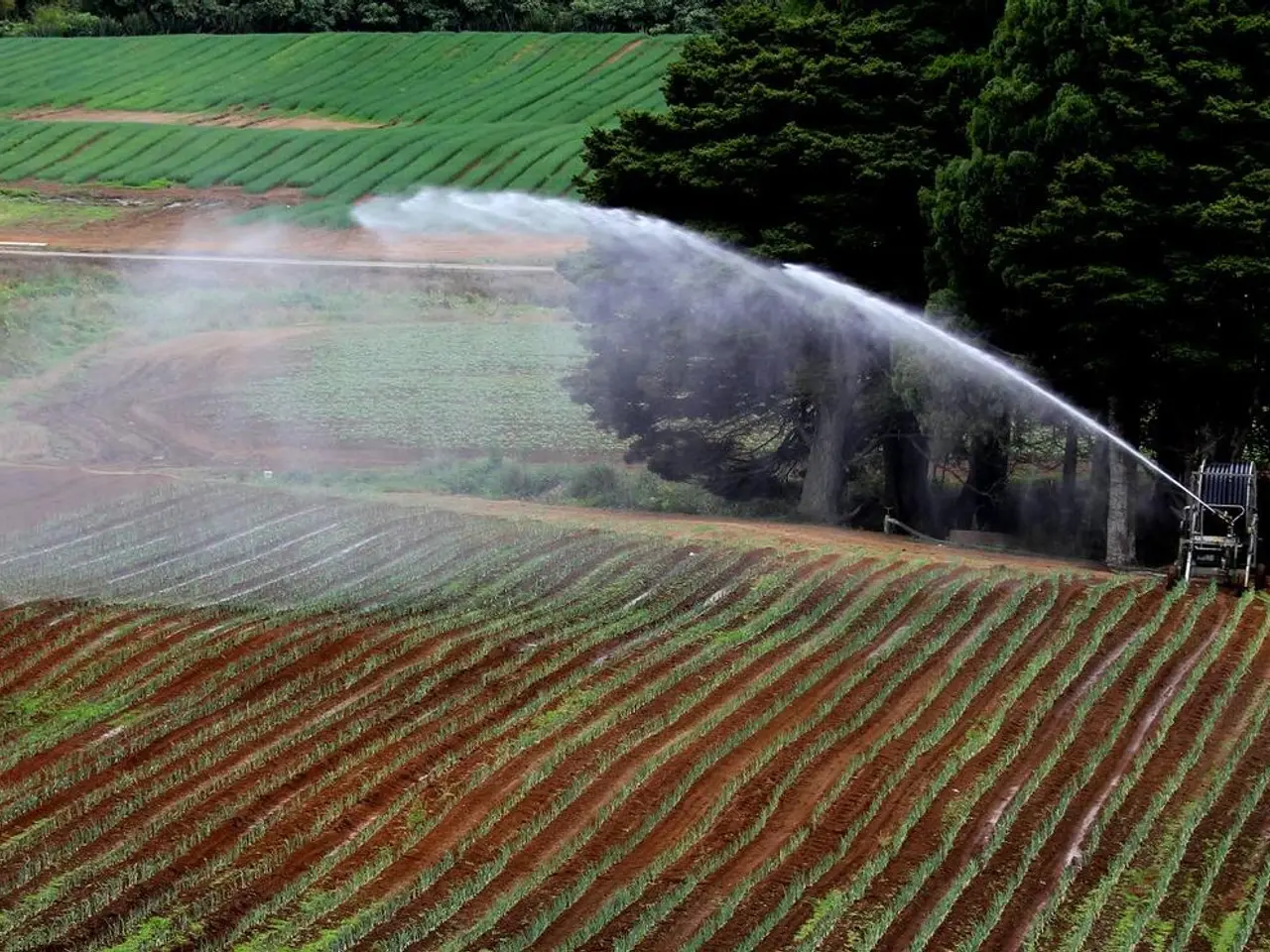Preventing Failure in Irrigation Systems: Key Strategies to Consider
Maintaining a well-functioning irrigation system is crucial for ensuring stable pressure, preventing breakdowns, and optimising water consumption. Here are some key practices to follow for effective irrigation system maintenance.
Regular inspections and servicing of components such as sprinkler heads, valves, electrical connections, nozzles, and filters are essential. During these checks, it's important to identify water seeping from heads, blocked or misdirected spray patterns, broken or missing sprinkler heads, and leaks around valves. Clean or replace clogged or damaged components as needed to keep the system running smoothly.
Valve covers, valve boxes, and electrical connections should also be verified for damage or corrosion. Drip or micro irrigation systems require special attention, with emitter connections, filters, and strainers needing regular checks to ensure proper operation.
Seasonal maintenance is equally important. Winterization, which involves draining the system and reprogramming controllers, is necessary at the end of the season. Spring start-up checks are also essential to detect frozen or winter damage and recalibrate the controller settings for optimal watering schedules.
Quarterly system audits are recommended to inspect filters, valves, sensors, and lines, with annual deep cleanings to remove sediment build-up from pumps and mainlines. End-of-season evaluations should update programming based on crop or landscape needs.
Technologies such as remote monitoring, IoT diagnostics, and smart controllers with rain sensors and soil moisture detection can help with predictive maintenance and efficient water application, reducing waste and operational costs.
Engaging licensed irrigation professionals to perform these tasks is recommended, especially for complex components like automatic valves and electronic controllers. A well-designed irrigation system with quality components can withstand environmental stresses better and last longer.
Visible malfunctions, such as zones of the garden that remain dry or unusual flooding, are clear signs of a problem. Abnormal pressure in an irrigation system can indicate leaks, blockages, or damaged solenoid valves. Regular maintenance helps identify these signs promptly, reducing the risk of major failures.
In conclusion, regular maintenance of irrigation systems is vital for system efficiency, ensuring water is applied uniformly and only when needed, avoiding overwatering, and reducing water bills. It also extends the life of equipment by addressing small issues before they cause major failures. By following these practices, you can ensure your irrigation system remains in top shape, providing the perfect watering conditions for your plants all year round.
[1] Irrigation Association. (n.d.). Irrigation Maintenance Best Practices. Retrieved from https://www.irrigation.org/resources/best-practices/irrigation-maintenance-best-practices
[2] Irrigation Association. (n.d.). Smart Controllers. Retrieved from https://www.irrigation.org/resources/smart-controllers
[3] Irrigation Association. (n.d.). Winterization. Retrieved from https://www.irrigation.org/resources/winterization
[4] Irrigation Association. (n.d.). Irrigation System Audits. Retrieved from https://www.irrigation.org/resources/irrigation-system-audits
[5] Irrigation Association. (n.d.). Irrigation System Component Inspections. Retrieved from https://www.irrigation.org/resources/irrigation-system-component-inspections
To maintain an optimized home-improvement project focusing on home-and-garden, regularly applying the maintenance best practices from the Irrigation Association is essential. These best practices include component inspections, seasonal maintenance, and system audits, as well as the use of smart controllers and technologies like remote monitoring to enhance efficiency.




